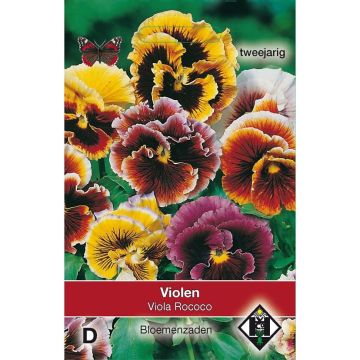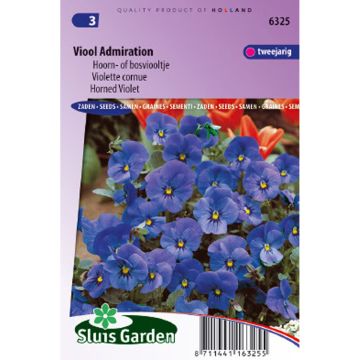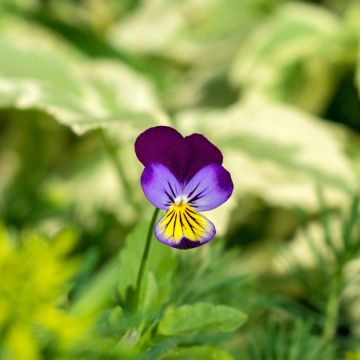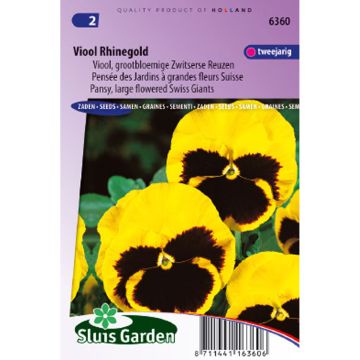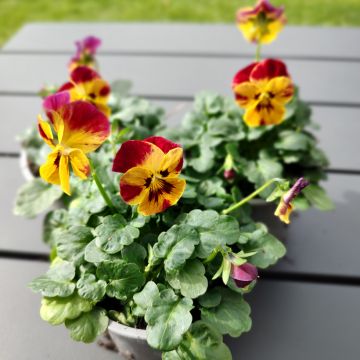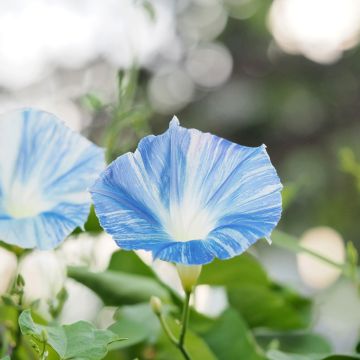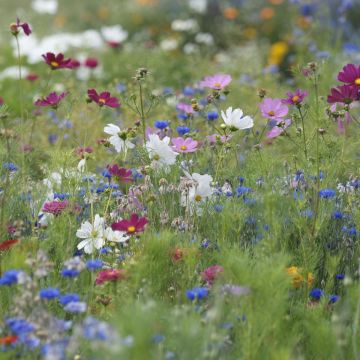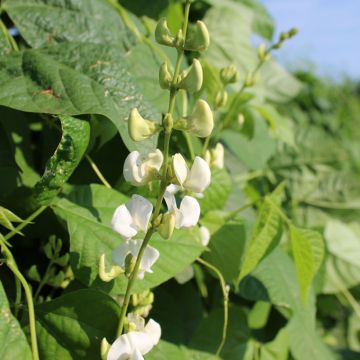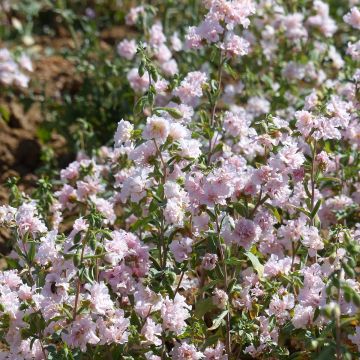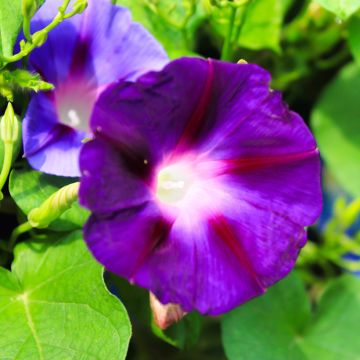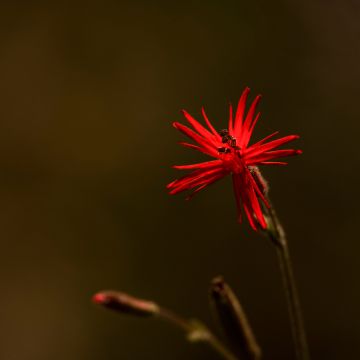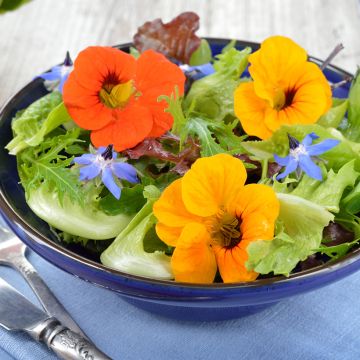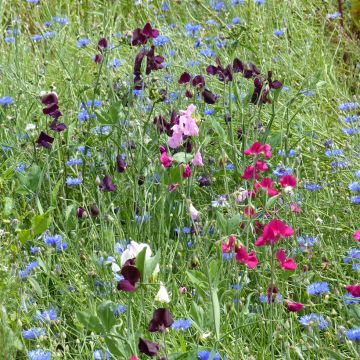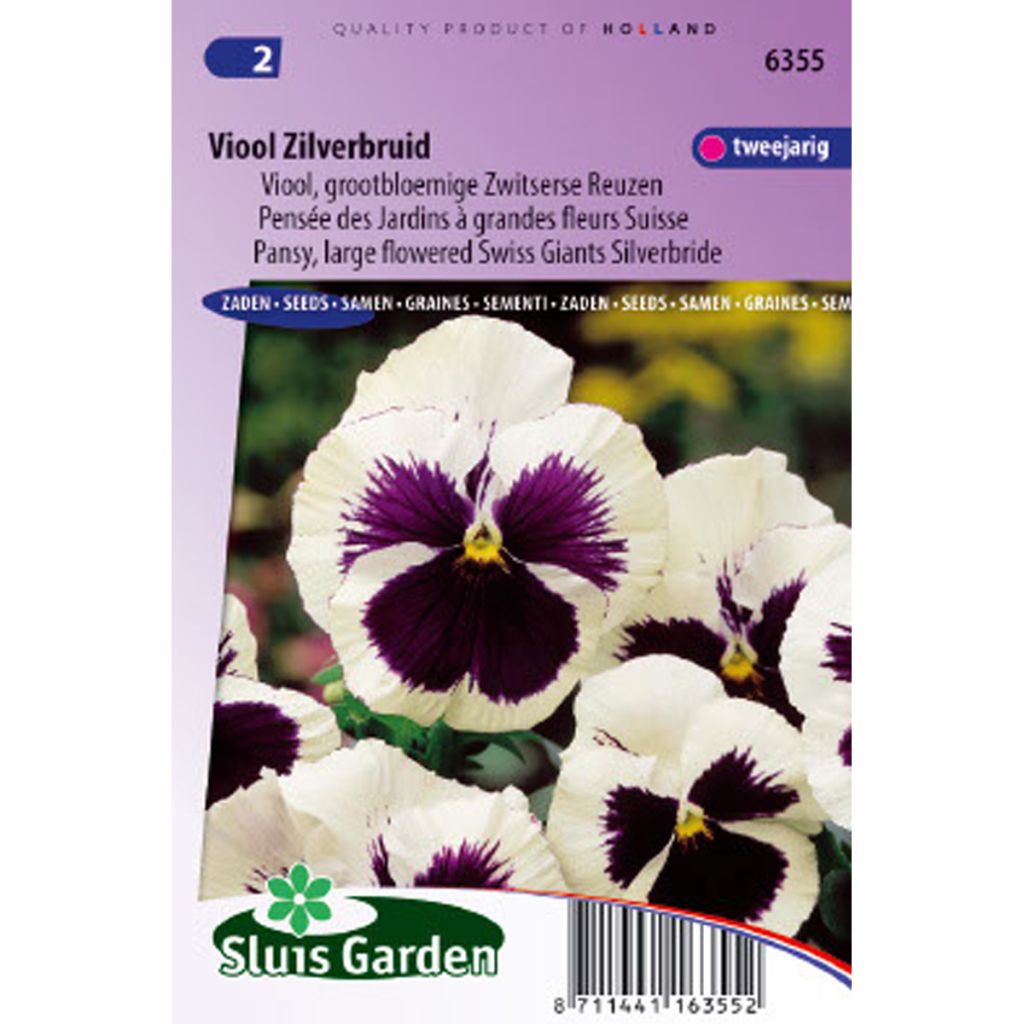

Viola Silverbride - Swiss Garden Pansy Seeds
Viola Silverbride - Swiss Garden Pansy Seeds
Viola x wittrockiana Silverbride
Pansy, Swiss Giant Pansy, Garden Pansy, Violet
This item cannot be shipped to the selected country
Dispatch by letter from €3.90
More information
Schedule delivery date,
and select date in basket
This plant carries a 6 months recovery warranty
More information
We guarantee the quality of our plants for a full growing cycle, and will replace at our expense any plant that fails to recover under normal climatic and planting conditions.
Seed-only orders are dispatched by sealed envelope. The delivery charge for seed-only orders is €3.90.

Does this plant fit my garden?
Set up your Plantfit profile →
Description
Viola x wittrockiana 'Silverbride' is also called Pansy Swiss Giant or garden pansy. The Pansy Swiss Giants forms a small bush measuring 25 cm high and 25 cm wide that is intended for decorating low-lying beds, borders and especially pots and window boxes, combined with other winter and spring flowering plants (such as forget-me-nots, dwarf daffodils, daisies, primroses, botanical tulips...).
The wittrockiana species is a cross-breed between different species of violets, reuniting their different qualities. This is how horticulturists created this bushy herbaceous perennial with creeping stems, which they usually grow in a two-year life cycle.
The 2 to 5 cm long leaves are oval, slightly lobed, glossy, medium to dark green. The foliage is evergreen.
The great advantage of this perennial pansy is its long and abundant flowering which can be spread last from December to June depending on the time of sowing.
Pansies from the Swiss Giants Mix present many large silvery white flowers that measure 6 to 10 cm in diameter and that progressively turn blue. The yellow eyes in the centre of the flower surrounded by large purple-blue blotches make the blooms look like faces.
The solitary flowers consist of 5 overlapping petals. The lower petal forms a very short spur at the back of the flower.
Pansy Swiss Giants are ephemeral perennials that can still self-seed quite naturally at the end of the season.
A position in the sun or partial shade will suit them perfectly. Even if they like rich soils, avoid growing them in pure compost. The foliage would overdevelop at the expense of the number of flowers. Ideally, mix 1/3 potting soil, 1/3 garden soil and 1/3 coarse sand in your pots.
The flowers of pansies are edible so don't hesitate to decorate your plates with one or two flowers or even place a few on your salads to give them a touch of colour.
Report an error about the product description
Flowering
Foliage
Plant habit
Botanical data
Viola
x wittrockiana
Silverbride
Violaceae
Pansy, Swiss Giant Pansy, Garden Pansy, Violet
Cultivar or hybrid
Other Pansy seeds
Planting and care
For winter flowering (December to March): sow your pansies in June-July and transplant in September in pots or in the garden, spacing them 20 cm apart. For spring flowering (April-June): sow your pansies under glass (hot bed at a minimum temperature of 16°c) in February and plant out in March in pots or in the garden, spacing them 20 cm apart. In both cases, use a mixture of 1/3 potting soil, 1/3 garden soil and 1/3 coarse sand. It takes 15 days for the seedlings to appear. Watch out for attacks by snails and slugs who are particularly fond of these young plants. Deadheading spent flowers will encourage further blooming.
Sowing period
Intended location
-
, onOrder confirmed
Reply from on Promesse de fleurs
Flower seeds
Haven't found what you were looking for?
Hardiness is the lowest winter temperature a plant can endure without suffering serious damage or even dying. However, hardiness is affected by location (a sheltered area, such as a patio), protection (winter cover) and soil type (hardiness is improved by well-drained soil).

Photo Sharing Terms & Conditions
In order to encourage gardeners to interact and share their experiences, Promesse de fleurs offers various media enabling content to be uploaded onto its Site - in particular via the ‘Photo sharing’ module.
The User agrees to refrain from:
- Posting any content that is illegal, prejudicial, insulting, racist, inciteful to hatred, revisionist, contrary to public decency, that infringes on privacy or on the privacy rights of third parties, in particular the publicity rights of persons and goods, intellectual property rights, or the right to privacy.
- Submitting content on behalf of a third party;
- Impersonate the identity of a third party and/or publish any personal information about a third party;
In general, the User undertakes to refrain from any unethical behaviour.
All Content (in particular text, comments, files, images, photos, videos, creative works, etc.), which may be subject to property or intellectual property rights, image or other private rights, shall remain the property of the User, subject to the limited rights granted by the terms of the licence granted by Promesse de fleurs as stated below. Users are at liberty to publish or not to publish such Content on the Site, notably via the ‘Photo Sharing’ facility, and accept that this Content shall be made public and freely accessible, notably on the Internet.
Users further acknowledge, undertake to have ,and guarantee that they hold all necessary rights and permissions to publish such material on the Site, in particular with regard to the legislation in force pertaining to any privacy, property, intellectual property, image, or contractual rights, or rights of any other nature. By publishing such Content on the Site, Users acknowledge accepting full liability as publishers of the Content within the meaning of the law, and grant Promesse de fleurs, free of charge, an inclusive, worldwide licence for the said Content for the entire duration of its publication, including all reproduction, representation, up/downloading, displaying, performing, transmission, and storage rights.
Users also grant permission for their name to be linked to the Content and accept that this link may not always be made available.
By engaging in posting material, Users consent to their Content becoming automatically accessible on the Internet, in particular on other sites and/or blogs and/or web pages of the Promesse de fleurs site, including in particular social pages and the Promesse de fleurs catalogue.
Users may secure the removal of entrusted content free of charge by issuing a simple request via our contact form.
The flowering period indicated on our website applies to countries and regions located in USDA zone 8 (France, the United Kingdom, Ireland, the Netherlands, etc.)
It will vary according to where you live:
- In zones 9 to 10 (Italy, Spain, Greece, etc.), flowering will occur about 2 to 4 weeks earlier.
- In zones 6 to 7 (Germany, Poland, Slovenia, and lower mountainous regions), flowering will be delayed by 2 to 3 weeks.
- In zone 5 (Central Europe, Scandinavia), blooming will be delayed by 3 to 5 weeks.
In temperate climates, pruning of spring-flowering shrubs (forsythia, spireas, etc.) should be done just after flowering.
Pruning of summer-flowering shrubs (Indian Lilac, Perovskia, etc.) can be done in winter or spring.
In cold regions as well as with frost-sensitive plants, avoid pruning too early when severe frosts may still occur.
The planting period indicated on our website applies to countries and regions located in USDA zone 8 (France, United Kingdom, Ireland, Netherlands).
It will vary according to where you live:
- In Mediterranean zones (Marseille, Madrid, Milan, etc.), autumn and winter are the best planting periods.
- In continental zones (Strasbourg, Munich, Vienna, etc.), delay planting by 2 to 3 weeks in spring and bring it forward by 2 to 4 weeks in autumn.
- In mountainous regions (the Alps, Pyrenees, Carpathians, etc.), it is best to plant in late spring (May-June) or late summer (August-September).
The harvesting period indicated on our website applies to countries and regions in USDA zone 8 (France, England, Ireland, the Netherlands).
In colder areas (Scandinavia, Poland, Austria...) fruit and vegetable harvests are likely to be delayed by 3-4 weeks.
In warmer areas (Italy, Spain, Greece, etc.), harvesting will probably take place earlier, depending on weather conditions.
The sowing periods indicated on our website apply to countries and regions within USDA Zone 8 (France, UK, Ireland, Netherlands).
In colder areas (Scandinavia, Poland, Austria...), delay any outdoor sowing by 3-4 weeks, or sow under glass.
In warmer climes (Italy, Spain, Greece, etc.), bring outdoor sowing forward by a few weeks.



































